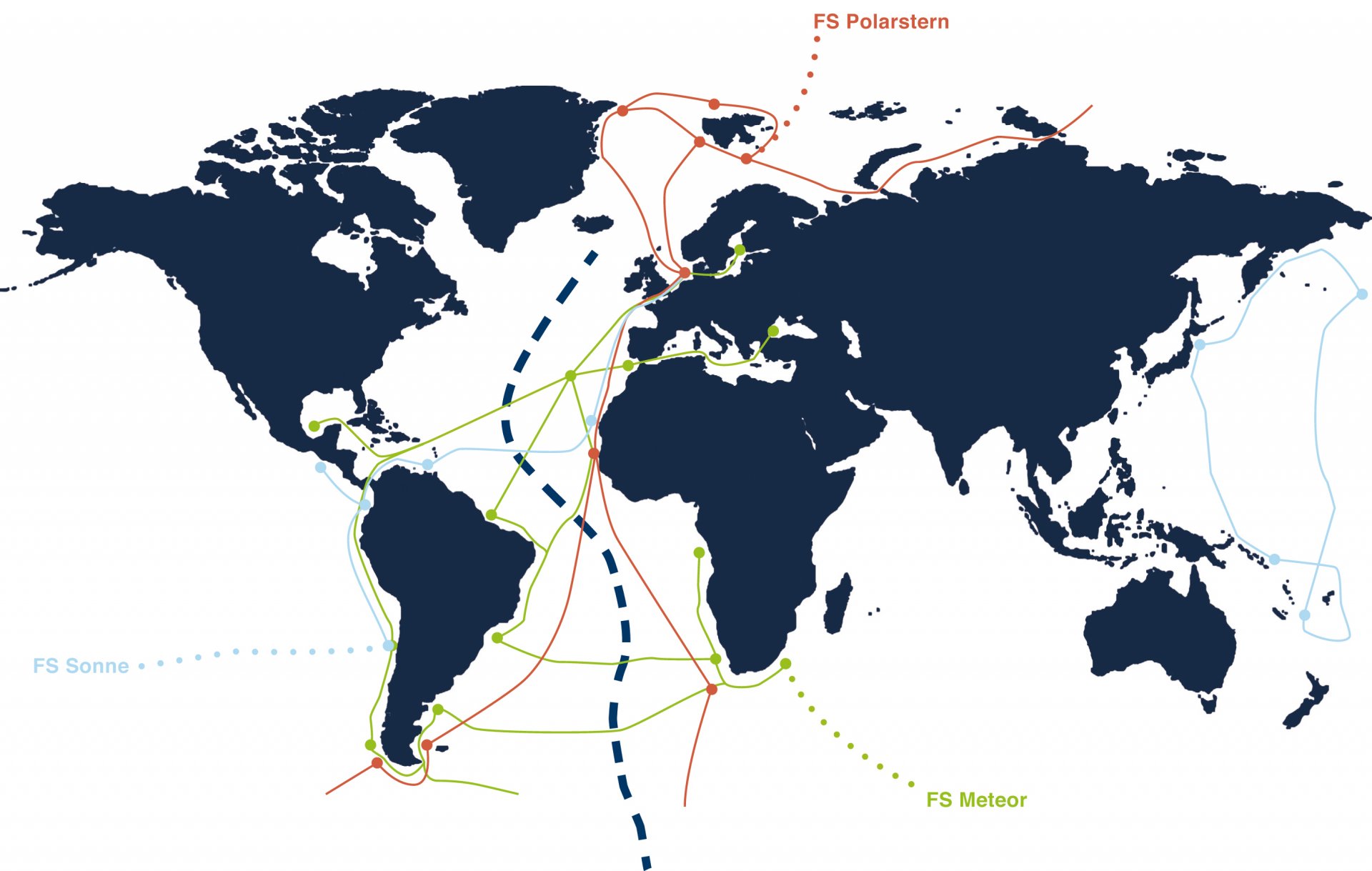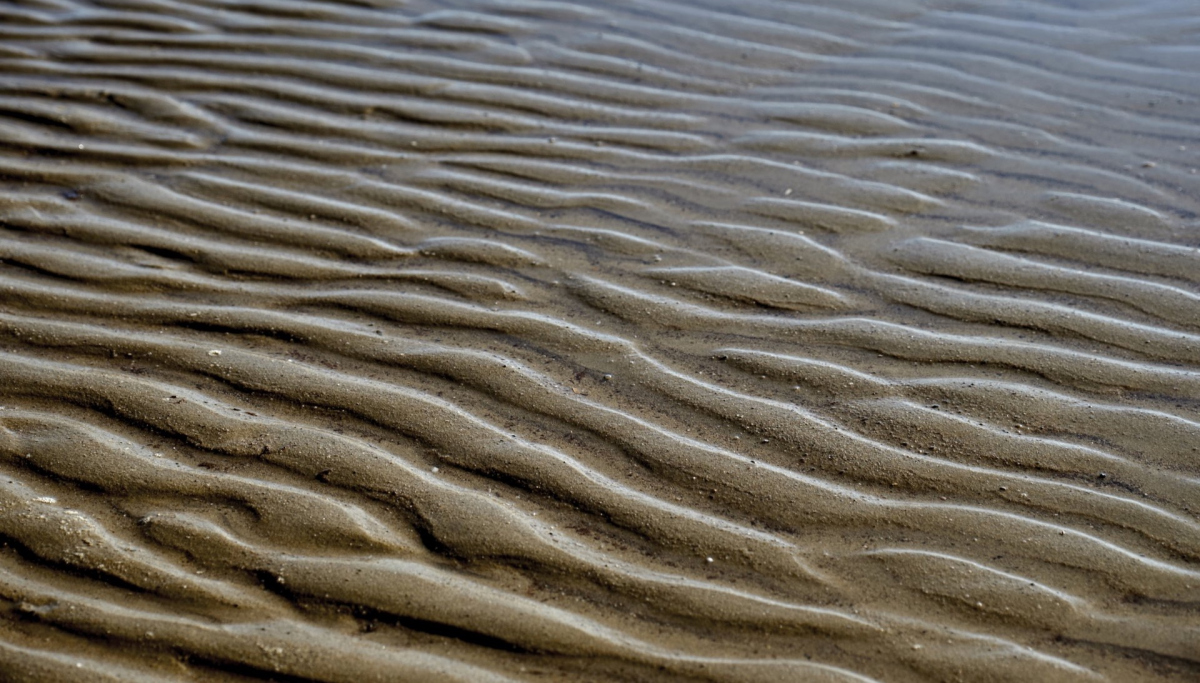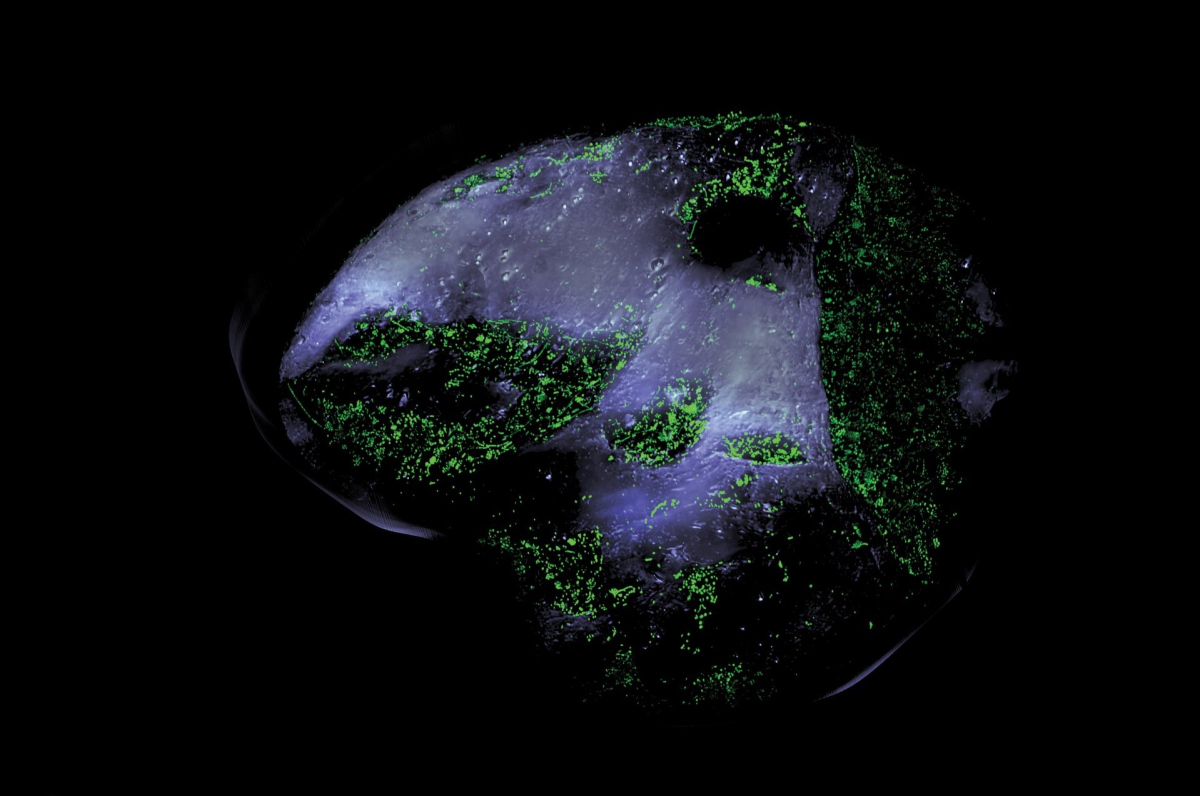- Research & Instruments
- Where we study - Our places of research
Where we study - Our places of research
> 42,000 sea miles
are covered every year by the large German research vessels on the world’s oceans. They carry our scientists to the places that are at the centre of our research – from the North Sea to distant shores and the middle of the ocean, from the poles to equatorial latitudes: To better understand marine microbes, it is important for us to study them in their natural environment. We also collect numerous samples for analyses in our laboratory back home.
≈ 65,000 kilometres
Like the seam on a baseball, mid-ocean ridges can be traced around the globe. Here, tectonic plates are slowly drifting apart. The Mid-Atlantic Ridge makes up nearly one third of all mid-ocean ridges, and we explore hydrothermal vents and their inhabitants from the Azores to south of the Equator.
> 200 metres deep
The oceanic night begins. No light penetrates this far. It is cold, nutrition is scarce. Pictures from underwater cameras show that one only rarely encounters live organisms here. However, even in this underwater desert there are occasionally oases – for example at hot vents and cold seeps.
> 300 °C
More than boiling: This is the temperature of the water gushing from black and white smokers on the seafloor. It doesn’t bother some microbes, which can grow at temperatures as high as 120°C. On the contrary. They thrive around these deep-sea saunas.
Bright aquamarine, scintillating turquoise, deep sapphire. Pleasantly lukewarm, refreshingly cool, freezing cold. The ocean is different everywhere. Upwelling occurs along the continental west coasts. Cool, nutrient-rich water rises towards the surface from the depths. Here, it helps many algae grow – a richly laid table for life in the sea. In the open ocean, on the other hand, the offerings are much leaner. Salt levels alter between the poles and the equator. From the top down to the bottom of the ocean, light rapidly disappears, the pressure rises and the temperature drops. Right at the bottom, in the sediment, there is often no oxygen just below the surface. And despite all of this, microscopic life goes on: Wherever they are, microorganisms have developed creative solutions to the challenges they face. Correspondingly, the locations at which we do our research also vary. We travel by ship from the North Pole through the tropics to the South Pacific, taking samples on beaches or on the open sea, from the surface of the sea and many thousands of metres down to the seafloor.
Beach with filter function
Some bacterial species can be found on almost all grains of sand. These regular players have a significant impact on the ecosystem: Many of the substances that are flushed with seawater into the sands do not emerge again (or are chemically altered). For example, the bacteria process both nitrogen and carbon compounds, thereby turning sand into an enormous, purifying filter. The microorganisms in the sand, for example, remove nitrate, which passes from agricultural land via rivers into coastal seas, and convert it into harmless nitrogen gas. Without this bacterial recycling, eutrophication of the oceans could occur, which would bring about a plethora of problems such as harmful algal blooms. Sands can thus protect the oceans from pollutant inputs from rivers.
Withdrawn for protection
Dunes, mud, seals, lugworms – typical for most visitors to the North Sea coast. For us, in contrast, the beach is a large, open laboratory. We pay special attention to the coastal inhabitants living hidden from view in the mud: The bacteria in the sand. They do not colonize the grains of sand evenly. Exposed surfaces on the grains are almost uninhabited. The picture is quite different in the fissures and depressions. Here, they are gathered closely together. In such indentations, the microbes are well protected – for example, when water swirls the grains of sand around and rubs them against each other. Also, they are safe from animals that graze the sand for food.
A question of taste
Some microorganisms are all-rounders. We can find them almost everywhere in the oceans. Others have clear preferences, for example with regard to temperature or oxygen levels. They can only be found where the conditions for them are just right. However, rare does not mean unimportant. We therefore not only study how abundant and widespread organisms are, but also how active they are. An example: Microorganisms that fix nitrogen. Some nitrogen-fixing species are extremely numerous, but barely active. Others are much rarer, but all the more active. They can truly fertilize the oceans.
Oases of life in the deep-sea desert
Tectonic plates drift apart along mid-ocean ridges. Black smokers can occur here: Geothermal energy heats seawater deep below the seafloor. This water is rich in dissolved minerals and upon contact with the cold ocean waters at the seafloor, the minerals are precipitated and deposited, and metre-high chimneys form. Some microorganisms use the dissolved gases in the vent water as an energy source and form the basis for diverse and abundant animal communities – oases of life in the deep-sea desert.
Such oases can also be created differently: Cold seeps, for example, form where one tectonic plate is pushed beneath another. Methane escapes at numerous sites on the seafloor. Specialized microorganisms extract energy from the greenhouse gas methane and provide the basis for thriving ecosystems at these seeps. The methane-oxidizing microorganisms at seeps are critical for controlling the methane balance in the ocean. Elsewhere, there are underwater volcanoes that spew oil and asphalt. Here, too, many animals live in symbiosis with bacteria that can exploit chemicals in the oil. Even whale carcasses or sunken tree trunks can – for a limited time – provide enough energy and carbon for a rich variety of life.




